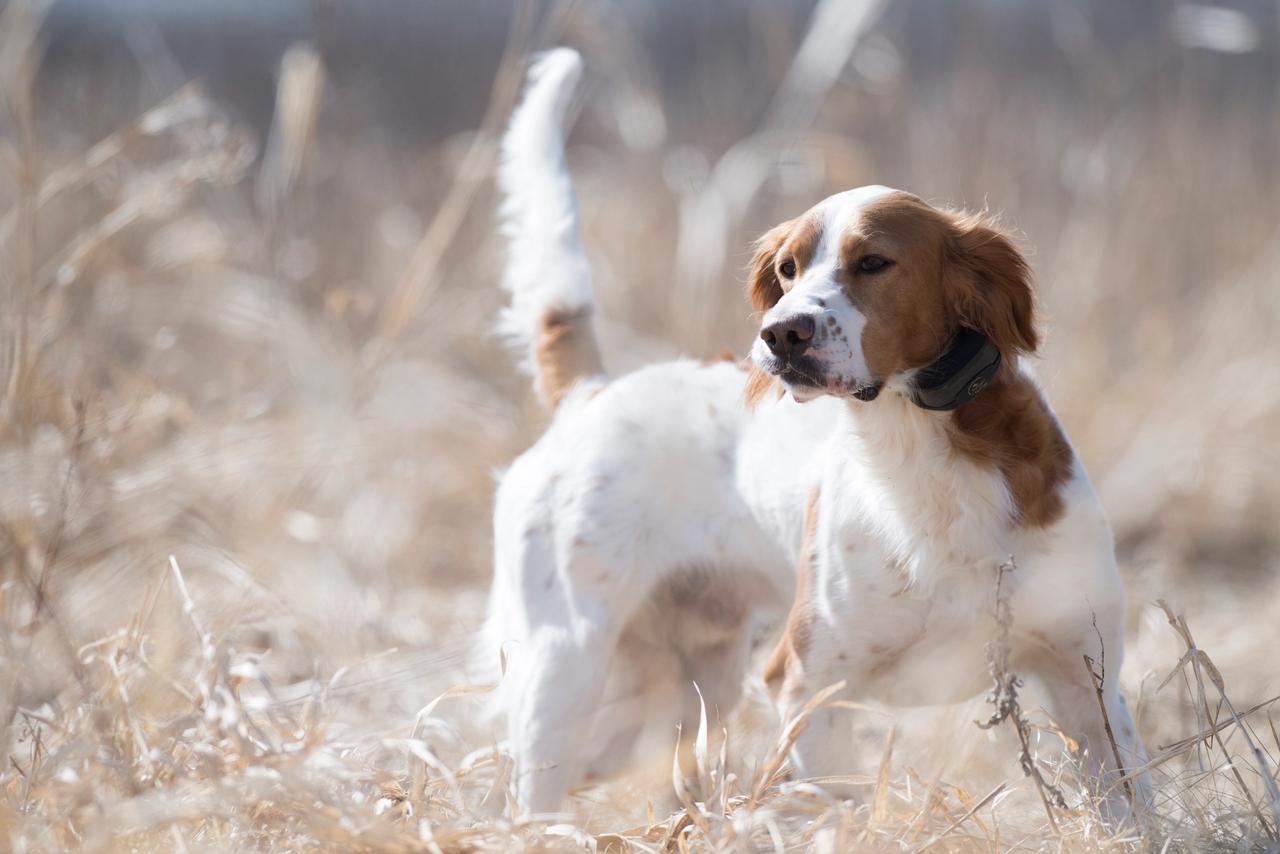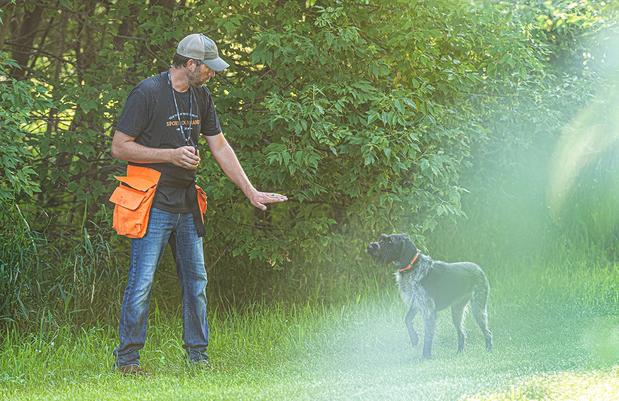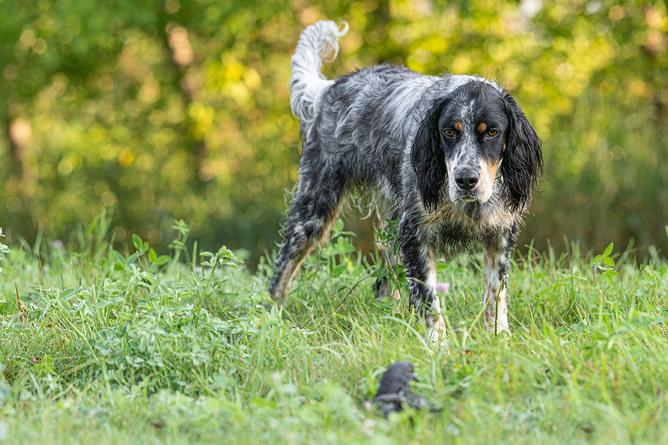
Training Pointing Dogs with Birds - Part 4
Posted by LTC Jim MorehouseIn Part Three of this series I explained how to work on more advanced steadiness exercises using live birds. Now I’m going to finish by giving you my thoughts on how to deal with running birds.
I’ve mentioned that when you start using live birds, you always try to work your dog into them in a crosswind so he hits that scent all at once and stops immediately. It’s very easy to see exactly when he winds that bird, and you’re right there in control to make a correction if needed.
Now, when you’re out hunting, your dog might get into a field where your dog is getting a nose full of scent from a bird or birds directly upwind, and they’re running. That’s an awful lot of pressure. Instead of stopping and staying stopped, he’s tempted to try and get closer and closer, which we call “creeping.” The result is often a bumped bird. Whether you’re taking about pheasants in South Dakota or Scaled quail in Texas or Gambel’s quail in the Southwest, the principles are the same. And while a single running rooster is one thing, a covey of 20 or more quail is another.
How do you prepare for this challenge? The first thing I recommend if you’re in a location that provides the chance, is to work a young dog on wild birds while keeping him on a lead. If you’ve already worked up to the e-collar stage, you can go with that, but the important thing is that you’re in control if you encounter running birds. I shoot very few training birds over my dogs. And I don’t do it until they’re completely steady to wing and shot. That’s a reward, not something I want them doing every day.
There are a lot of arguments for and against letting a dog point and then relocate on his own if the bird moves. I don’t let a young dog relocate on his own. A young dog needs to stay stopped until I release him, which I do by just stepping in and giving him a tap.
I’ll hear people say, you’re going to lose birds if you don’t let the dog stay right on top of them. Well, I’m not a big believer in that. When you allow a dog to creep, maybe the first time he gets 20 yards out of gun range and the bird flushes. The next time it’s a little farther. After that, the dog just thinks it’s OK to keep doing that and now you’ve got pheasants flushing 100 yards out ahead of you.
However, as a dog matures and after he’s worked lots of birds, I’ll let him relocate on his own. Where I live and hunt in Arizona, I have dogs that will trail quail 200, even 300 yards. They’ll point, relocate, point, relocate … over and over. I do a lot of guiding, and I tell my clients to just stay with the dog. Eventually the birds are going to stop running and we can get a flush or they’re just going to take to the air. To be clear, though, I’m talking about a dog that is 4 or 5 years old and has seen literally 1,000 birds down here in Arizona.
I guess you could say experience has to be the biggest factor you look at in making the decision to let a dog relocate. We have Mearns quail down here and when the dogs go on point sometimes we’ll get up there and the birds are walking around right in front of the dogs, sometimes just a few feet away. I’ve even seen them walk right under a dog. It all goes back to teaching whoa and the tug. And remember, every dog is different. Some mature faster than others.
My way’s not the only way. It’s harder for some people who don’t have access to lots of wild birds to get their dog as much experience as they would like. So, I’ll remind anyone who likes to work dogs on liberated birds or training birds, when they go to true wild birds, most dogs can’t make that transition without a little reinforcing. Even with some of my experienced dogs, when we get out of summer training and actually get back to hunting wild birds in the fall, I’m usually ready to make corrections with the e-collar because it’s such a transition. It’s exciting and they need a reminder now and then.
I hope the most important thing you take away from this series is that everything in pointing dog training is a building process. You can’t be in a hurry. That’s when you make mistakes, and those can be hard to overcome.

LTC Jim Morehouse
Tuscon, AZ
Raised in the Finger Lakes area of New York State, Jim was involved in hunting and birddogs from an early age. Upon graduation from college, he joined the US Army in 1967. He served until 1989, retiring at the rank of Lieutenant Colonel. After his retirement, Jim and his wife...
Related Products
UplandHunter® 1875
Related Articles

Training Pointing Dogs with Birds - Part 1
by LTC Jim Morehouse
When SportDOG® asked me to write training articles on some of the aspects of training pointing dogs to handle birds, it seemed like a pretty easy task. As a full-time trainer and quail guide in Arizona, pointing dogs and birds are my passion. However, as I started to write about...

Training Pointing Dogs with Birds - Part 2
by LTC Jim Morehouse
In Part One of this series I explained why “Whoa” is the most important command in pointing dog training. Now I’ll explain the next step I take toward tying “Whoa” and live birds together. I want to give my young dogs plenty of experience with finding live birds. One, it’s fun....

Training Pointing Dogs with Birds - Part 3
by LTC Jim Morehouse
In Part Two of this series I outlined my method for tying in the “Whoa” command with live birds. Now it’s time to get into the some more advanced live-bird work. Everything I’m explaining here still involves using a 15-foot lead or check cord. I don’t introduce the electronic collar...


